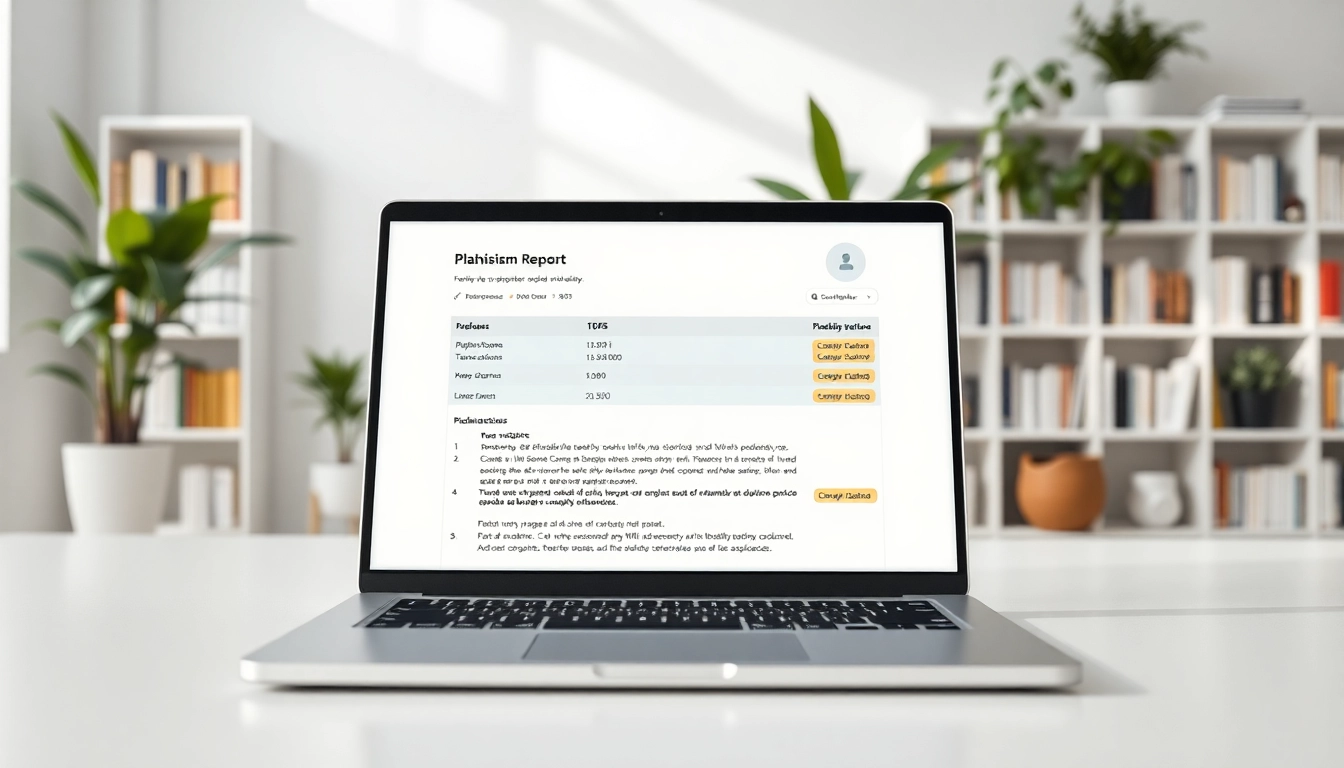
Understanding the Importance of a Plagiarism Checker
In an increasingly interconnected world, the importance of originality in writing cannot be overstated. Whether you’re a student, a researcher, a content creator, or a professional, maintaining the integrity of your work is crucial. A plagiarism checker serves as a vital tool in safeguarding this integrity by detecting instances of copied or poorly attributed content. This article dives into the nuances of plagiarism, elucidates how a plagiarism checker operates, and highlights the types of content that require scrutiny.
Why Plagiarism Matters
Plagiarism is often seen as a moral and ethical breach in writing. It not only undermines the original creator’s effort but also misleads readers concerning the authenticity of the information presented. The consequences can be severe, leading to academic penalties, loss of credibility, and even legal ramifications. In academia, plagiarizing can result in expulsion, a tarnished reputation, and diminished career options. In professional settings, it can lead to loss of jobs, revoked licenses, or damaged company reputations. Thus, understanding the weight of plagiarism is essential for anyone who produces written material.
How a Plagiarism Checker Works
A plagiarism checker uses advanced algorithms to scan text against a vast database of existing content to identify similarities. Most systems utilize web archives, journal articles, books, and previously submitted works to determine originality. When a document is uploaded, the software analyzes the text for exact matching, paraphrasing, and similarities to other sources, producing a report that details the percentage of originality and highlights areas of concern.
The effectiveness of plagiarism detection varies, with some checkers employing AI and machine learning techniques to enhance accuracy. Additionally, many of these tools now offer integrations with writing software, enabling seamless checks within the creative process.
Types of Content That Need Checking
Not all written content carries the same risks of plagiarism. Here are key categories to keep an eye on:
- Academic Papers: Students and scholars must ensure their citations are accurate and that their work is original to uphold academic standards.
- Business Reports: Professionals should verify that insights and data are their own or properly cited to maintain credibility within their industry.
- Creative Writing: Authors must guard their unique expressions and ideas against unauthorized use, as originality is paramount in this field.
- Content Marketing: Marketers need to ensure that blog posts, articles, and other content are not only engaging but also original for SEO effectiveness.
Choosing the Right Plagiarism Checker
When it comes to choosing a plagiarism checker, not all tools are created equal. Understanding your specific needs and evaluating the options available can help you make an informed decision. Here, we will explore key features, compare popular checkers, and analyze the cost versus benefits of using these tools.
Key Features to Look For
When evaluating a plagiarism checker, consider the following features:
- Database Size: A substantial database can improve detection accuracy. Look for tools that scan academic, public, and proprietary databases.
- Real-Time Checking: A checker that offers immediate feedback allows for instant adjustments and enhances the writing process.
- Detailed Reports: Quality tools provide comprehensive reports that outline similarities, sources, and the percentage of copied content.
- User-Friendly Interface: A straightforward, intuitive design aids in a smoother user experience and reduces the learning curve.
- Integration Options: If you use word processing or writing software, integration features can save time and streamline your workflow.
Comparison of Popular Plagiarism Checkers
A look at several popular plagiarism checkers reveals their unique strengths:
- Comprehensive Detection: Look for services famed for their deep dives into web and academic content.
- User Feedback: Some tools are touted for usability; choosing one that fits your style can be beneficial.
- Pricing Models: Understand the models available, whether subscription-based or pay-per-use, factoring in how often you will need the service.
Cost vs. Benefit Analysis
When choosing a plagiarism checker, evaluating the cost versus the benefits is essential. Free options may be attractive but often lack the depth and accuracy of paid services. Conversely, premium features can justify higher costs if they save time, ensure compliance with academic integrity, and enhance the quality of your writing. Ultimately, the best choice hinges on personal needs, frequency of use, and required accuracy levels.
Best Practices for Utilizing a Plagiarism Checker
Using a plagiarism checker effectively requires implementing best practices that improve its utility. Below are some actionable steps to ensure that every check adds value to your writing process.
Steps to Check Your Work
To maximize the effectiveness of a plagiarism checker, follow these steps:
- Prepare Your Content: Finalize your document before running it through the checker to gather an accurate report.
- Choose the Right Tool: Select a plagiarism checker that aligns with your specific needs as discussed earlier.
- Run the Check: Upload your document and initiate the scanning process.
- Review Findings: Analyze the report comprehensively, noting sections highlighted for potential issues.
Interpreting the Results
Once you have your plagiarism report, understanding the results is crucial. The report may include:
- Percentage of Plagiarism: A numerical value indicating how much of your work matches other sources.
- Highlighted Text: Sections of your work that appear similar to existing content, which need your attention.
- Source Citations: References for each section of matching text, guiding you to review or adjust accordingly.
Adjusting Your Writing Based on Feedback
Your next steps depend on the report outcome. For sections identified as problematic, consider paraphrasing, summarizing, or adding appropriate citations. Adjustments ensure that the final draft is not only original but also maintains the integrity and credibility required in your writing.
Common Mistakes When Using a Plagiarism Checker
While plagiarism checkers are valuable tools, incorrect usage may still lead to issues. Here are some common pitfalls and how you can avoid them.
Relying Solely on Technology
While a plagiarism checker can scan for similarities, it does not replace the need for critical thinking and analysis. Writers should use the tool as part of a broader review process, incorporating personal reflection on the work’s originality and adherence to style guidelines.
Ignoring Similarity Reports
A high similarity report doesn’t always indicate plagiarism. Instead of dismissing it, analyze the context of the matched content. It might include common phrases, technical terms, or properly cited material that does not require action.
Not Revising After Feedback
Receiving a report is only half the battle; taking action is paramount. Failing to revise based on feedback can accidentally lead to submitting unoriginal content. Always plan to refine your work after an analysis, enhancing its integrity.
Future Innovations in Plagiarism Checking Technology
The field of plagiarism detection is rapidly evolving, with new technologies enhancing the capabilities of these essential tools. A look at future innovations reveals exciting possibilities on the horizon.
AI Integration in Plagiarism Checkers
The integration of artificial intelligence promises to significantly improve plagiarism detection accuracy. AI can analyze writing patterns and context, allowing for more nuanced understanding beyond mere word-for-word matches. It can help in identifying paraphrased content, thereby minimizing false negatives.
The Impact of Writing Style Analysis
Emerging plagiarism checkers may incorporate writing style analysis, allowing them to assess not just content similarity but also voice and tone consistency. Such analyses can flag content that diverges from a writer’s typical style, suggesting potential issues with authorship or integrity.
Trends to Watch for in Plagiarism Detection
Future trends in plagiarism detection will likely include enhanced database access, user personalization features, and real-time collaboration capabilities that allow teams to check work collectively before final submission. Keeping abreast of these changes will ensure you choose the best tools to safeguard originality in your writing.







